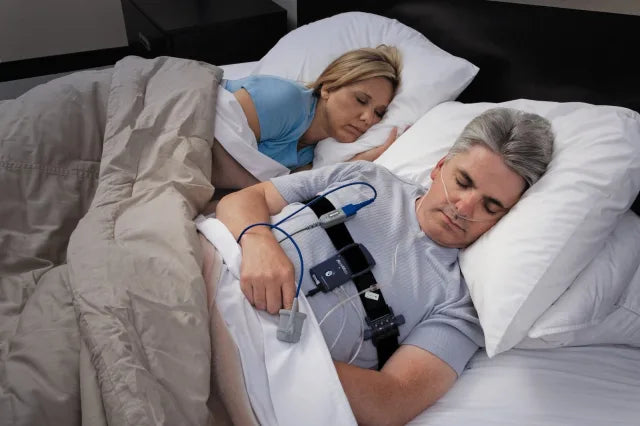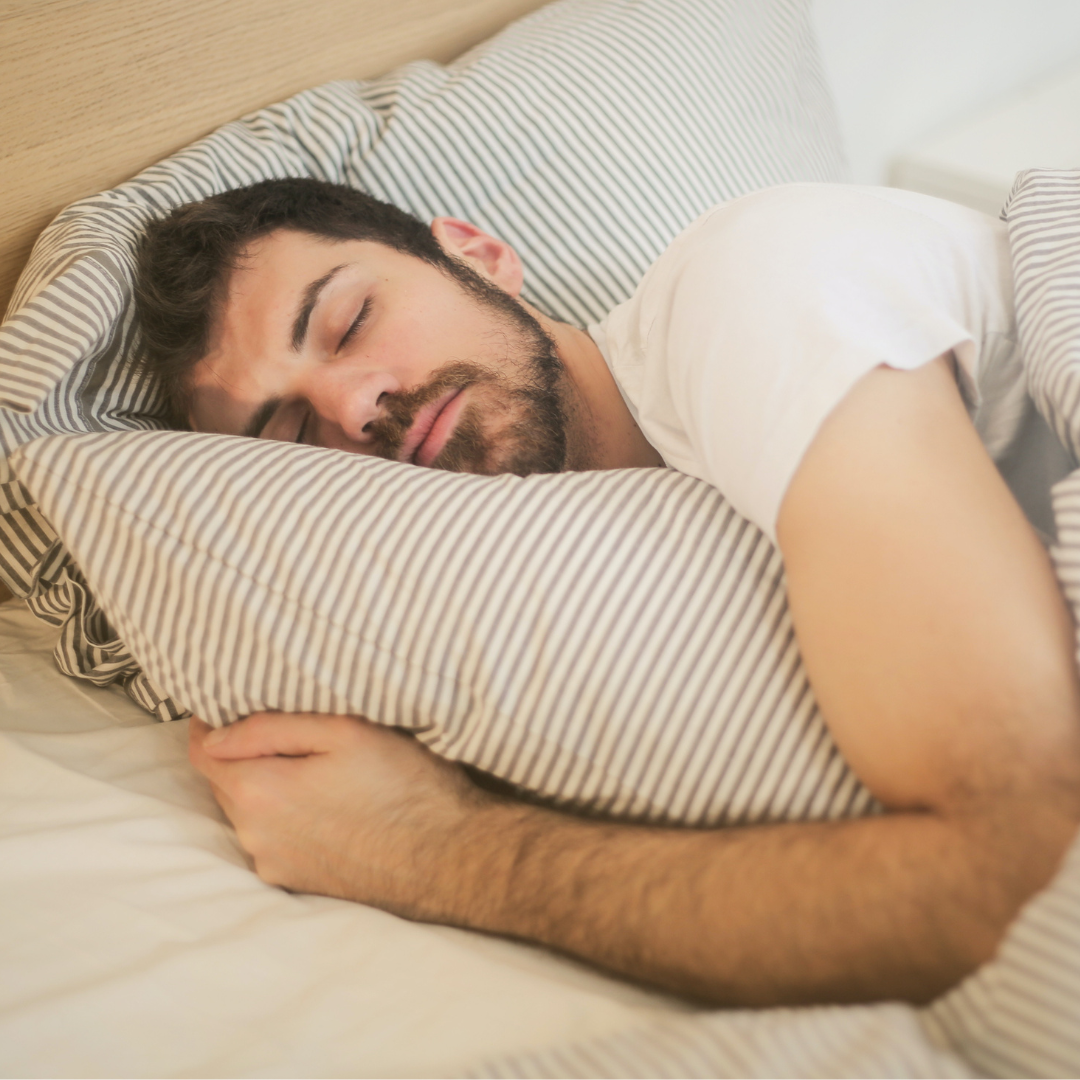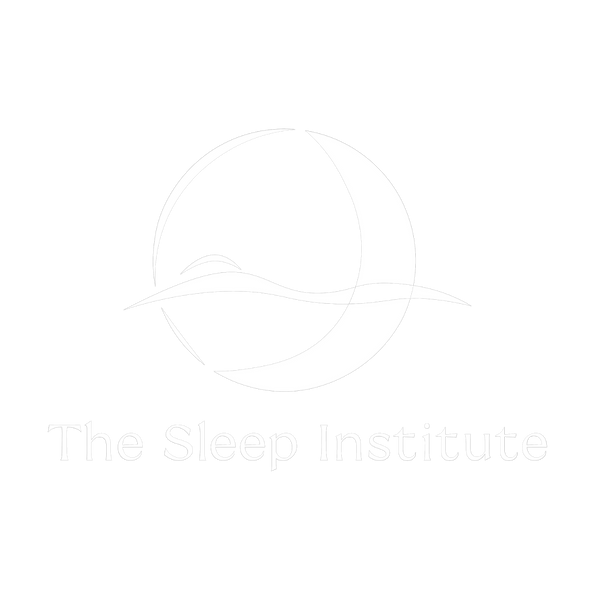
Level III Sleep Study - In Home Sleep Apnea Testing
After an initial consultation with our Sleep Physician, you may be referred for a Level III sleep study through The Sleep Institute, which is a non-invasive, pain-free procedure. The Remmers Sleep Recorder is used to record diagnostic indicators of sleep apnea, monitor the effectiveness of CPAP therapy, and follow-up on the titration of oral dental appliances.

Level I Sleep Study - Polysomogram
After an initial consultation with our Sleep Physician, you may be referred for a sleep study at the Centre for Sleep & Human Performance, which is a non-invasive, pain-free procedure. During a polysomnogram, a sleep technologist records multiple functions during sleep, such as brain wave activity, eye movement, muscle tone, heart rhythm, and breathing using electrodes and monitors placed on the head, chest, and legs.
What is involved in a Level I PSG?
A Level I polysomnographic study is a fully attended, comprehensive overnight in-lab stay that involves the expertise of a Registered Polysomnographic Technologist to set up and monitor the patient in an overnight setting. Hook-up will take approximately one hour. These studies use multiple sensors to monitor many aspects of your sleep and sleep quality, including:
- 10-lead EEG that monitors your brainwaves, sleep stages, and arousals in your sleep. The leads will be placed all over parts of the head with conductive paste.
- 2-lead EOG that monitors the movement of the eyes, with one lead being placed on the upper right eye and the other on the lower left side of the eye.
- 2-lead ECG that monitors the rhythm of your heart. These leads will be placed on your upper right chest and lower left rib cage.
- 2-lead EMG applied to the legs to assess for any movement disorders, which will be applied on both legs on the anterior tibialis.
- Nasal cannula/thermistor to assess the movement of airflow. This is tubing that will be placed in the nostrils, with a temperature sensor over the mouth and nose.
- Chest and abdominal belts to assess your breathing effort.
- Oximeter to monitor your overnight oxygen levels that will be placed on the finger or big toe. PLEASE NOTE: For the SpO2 Flex Sensor (finger sensor) to work correctly, fingernails must be free of nail polish and/or artificial nails.
The raw data collected from these studies are then sent off to be scored in detail, then analyzed and interpreted by the ordering physician. This process can take from two to six weeks before your follow-up consultation. A detailed diagnostic and interpretation report is generated, and the ordering physician will discuss with you the findings of the study and any treatment options that may be available concerning your sleep disorder.

